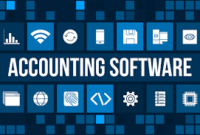Understanding the Role of a Software Application Developer
In today’s technology-driven world, businesses rely on software applications to streamline operations, enhance customer experiences, and manage internal processes. As demand for innovative software solutions grows, so does the need for skilled professionals who can design, build, and maintain these applications. Enter the Software Application Developer.
A Software Application Developer is responsible for creating and maintaining software programs that fulfill the specific needs of businesses or users. These developers may work on applications for a wide range of platforms, including web, mobile, desktop, and enterprise systems. Their role is critical, as they ensure the application not only functions properly but also meets the business objectives and provides an intuitive user experience.
In this article, we’ll explore the different facets of a Software Application Developer’s job, the skills required to excel in this field, and why hiring one could be a game-changer for your business.
What Does a Software Application Developer Do?
A Software Application Developer’s responsibilities go far beyond just writing code. They are involved in every stage of the software development lifecycle, from initial planning to deployment and ongoing maintenance. The complexity of their role requires them to work closely with other stakeholders such as project managers, UX/UI designers, and business analysts to ensure the final product aligns with the client’s goals.
Designing Software Solutions
Before a single line of code is written, a Software Application Developer is involved in the planning phase, where they help define the project’s scope and objectives. They work alongside clients or internal teams to understand the specific requirements and determine how best to meet them.
They also collaborate with UX/UI designers to map out user journeys, ensuring the software will be easy to use and visually appealing. Developers then create the technical blueprint, outlining the system architecture, database structure, and other essential elements that guide the coding process.
Coding and Programming
Once the planning phase is complete, developers dive into coding. This stage involves writing, testing, and debugging code in various programming languages. Some of the most common programming languages used by Software Application Developers include:
- Java: Popular for building cross-platform applications.
- Python: Known for its simplicity and readability, often used in AI and machine learning applications.
- C++: High-performance language often used in system software or game development.
- JavaScript: Essential for front-end and web application development.
Beyond coding the core features, developers often implement security measures, integrate APIs, and connect the software with databases to ensure smooth operation.
Testing and Debugging
A crucial part of the software development process is testing and debugging. Developers use various tools and techniques to ensure that the software performs as expected, without bugs or vulnerabilities. This process involves unit testing, where individual components are tested, and integration testing, where different modules are tested together.
Automated testing tools, like Selenium or JUnit, help to streamline this process, allowing developers to identify and resolve issues quickly. If any bugs are found, developers work to debug the code, ensuring the final product is stable and secure.
Deployment and Maintenance
After development and testing, the software is deployed. This can involve making the application available in app stores (for mobile apps) or deploying it to a server (for web applications). A Software Application Developer ensures that the deployment process goes smoothly, with minimal downtime.
Once the application is live, developers are responsible for its maintenance. This includes fixing bugs, adding new features, and ensuring that the application stays updated with the latest technologies and security protocols. Ongoing maintenance is critical to ensure long-term usability and scalability.



